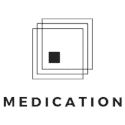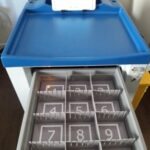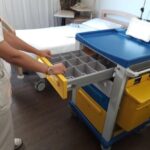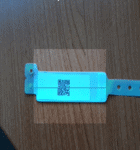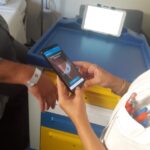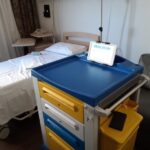ABOUT THE PROJECT
Health and medical processes can greatly benefit from the ICT, the IoT and recent advances in smart tags. The MEDICATION project aims to significantly lower critical errors in hospitals by transforming key hospital entities, such as drugs, patients, medication trolleys, pills/medicine etc. into smart nodes of the hospital IoT, by attaching smart tags and QR codes on them, and integrating them via cloud computing and mobile (android) Apps.
We have already built a proof of concept prototype (TRL-3), utilizing off-the-self components and microprocessor boards (such as Raspberry). Within MEDICATION, we aim to design and implement a new more efficient trolley, integrating sensors, tags, microprocessor and a mini-monitor, along with a mobile application to handle the medication delivery. The end-to-end system will be able to identify the trolley, the nurse in charge and the patient and indicate the correct location on the trolley where the dedication for the specific patient is located.

Our initial smart trolley prototype has already shown very encouraging results in reducing the number of errors in hospitals. MEDICATION will act as a non-intrusive, medical coordination extension on top of existing hospital’s procedures, based on smart tagging of wristbands, drugs, medication trolleys and dedicated devices or mobile phones to associate patients with the correct medication. The MEDICATION experiment will include the complete value-chain, starting from patient exams, medication receipt provided by the doctor in charge in the hospital cloud system, to drugsstocktaking and trolley loading, up to identification of the correct trolley, nurse, patient and thecorrect medication, even if the patient changes room, floor, bed or medication receipt.Though there are efforts to create smart medication trolleys (IPSA, Omnicell Savvy, TAPPS) to ourknowledge, there are no efforts to offer a holistic environment, which will really integrate a quitelarge number of smart tags of drugs, exams, mobile/medical devices, sensors, medical equipment,patients across the full hospital value chain, while supporting quality assessment in error prevention.MEDICATION will step beyond existing systems, offering an open APIs system, while reducing theoverall cost. Moreover, the MEDICATION end-platform will integrate tagged smart objects, which mayseamlessly interact offering a broad new service portfolio, e.g. through mobile phones’ smartcapturing sensors (e.g. cameras, touch screens, motion sensors, etc.). Last but not least, MEDICATIONallows for new business models, creating revenue streams from both optimization of health supportservices and hospitals’ reputation shaping. The MEDICATION paradigm will allow both public andprivate hospitals, doctors and medical experts to claim and prove error-free procedures, which iscritical for national safety.

MEDICATION will perform research and innovation in the areas of Smart System Integration (SSI), implementing an integrated Hospital Medical Information System (HMIS), which consists of a) a Smart Medical Trolley (SMT), b) a complete Hospital Backend Information System (HBIS) and c) a Medication Distribution Application (MDA). The SMT will utilize advanced microelectronics components and will be based on a mirco-controller subsystem, which will interface communication interfaces, multiple NFC sensors, temperature/humidity sensors and/or QR-code tags, actuators, LEDs and an LCD display. The system will be able to receive identification beacons from the hospital indoor WiFi network and assign the location of the most appropriate partition for storing the medication, based on their size and shape, if they are drugs or pills, the patient’s room location etc. Moreover, the HBIS will offer authorized access to the patient medication records, store the patient treatment medication schedule and control the SMT loading and distribution procedure. A great attention will be paid to the MDA, which will be user friendly and link the SMT and the HBIS during the medication distribution. The MDA will be an Android App, which will identify the patient using a QR code bracelet and then identify via proper LEDs the medication location racK and partition. Moreover, it will be able to display the short-term patient medication history (which medication was provided the last hour, day or week) and who is responsible for the medication distribution.
